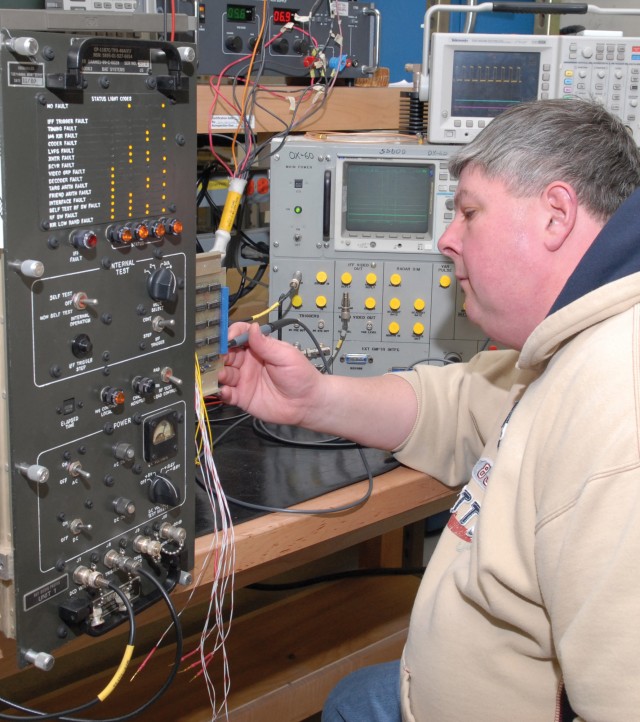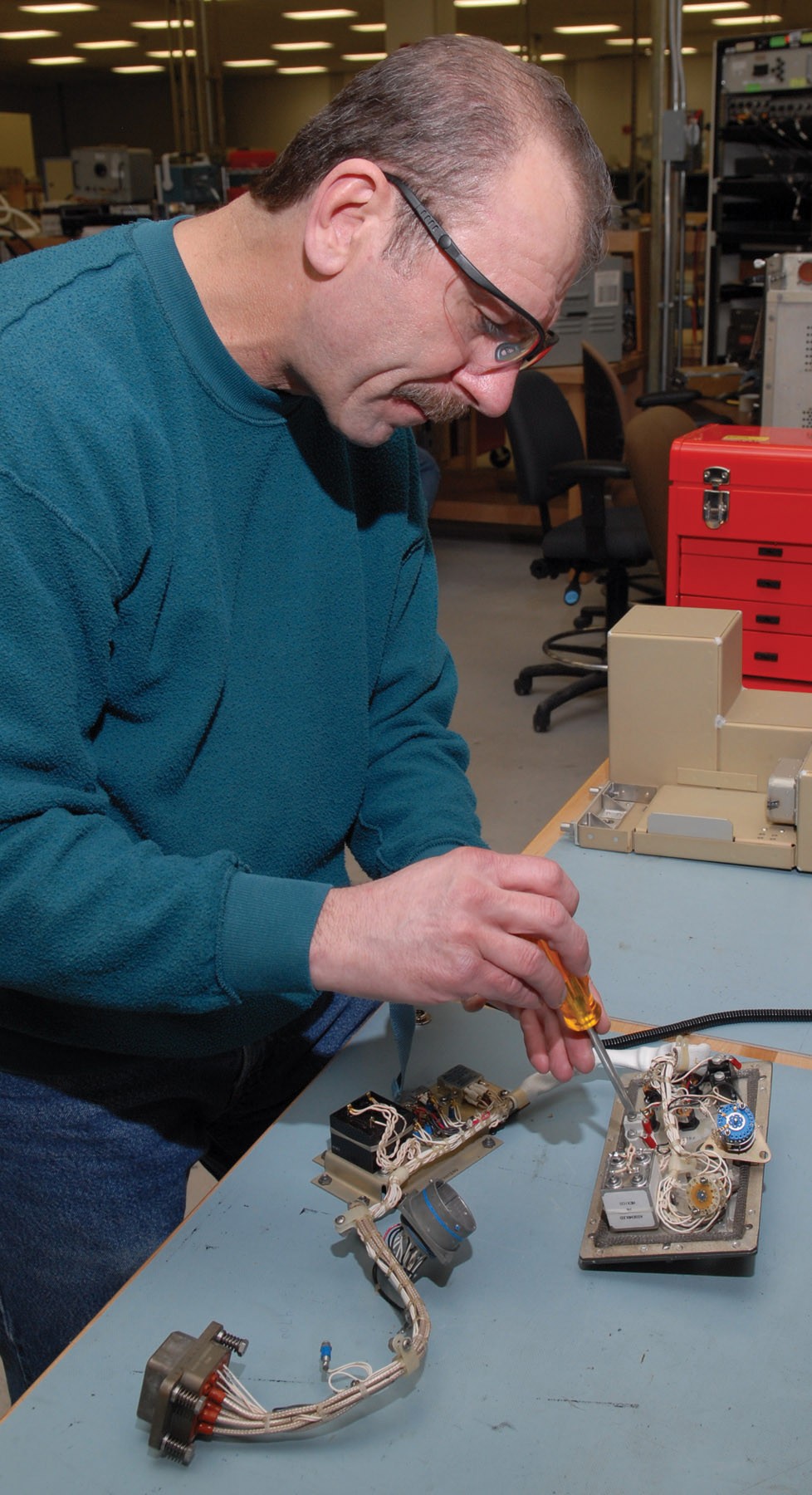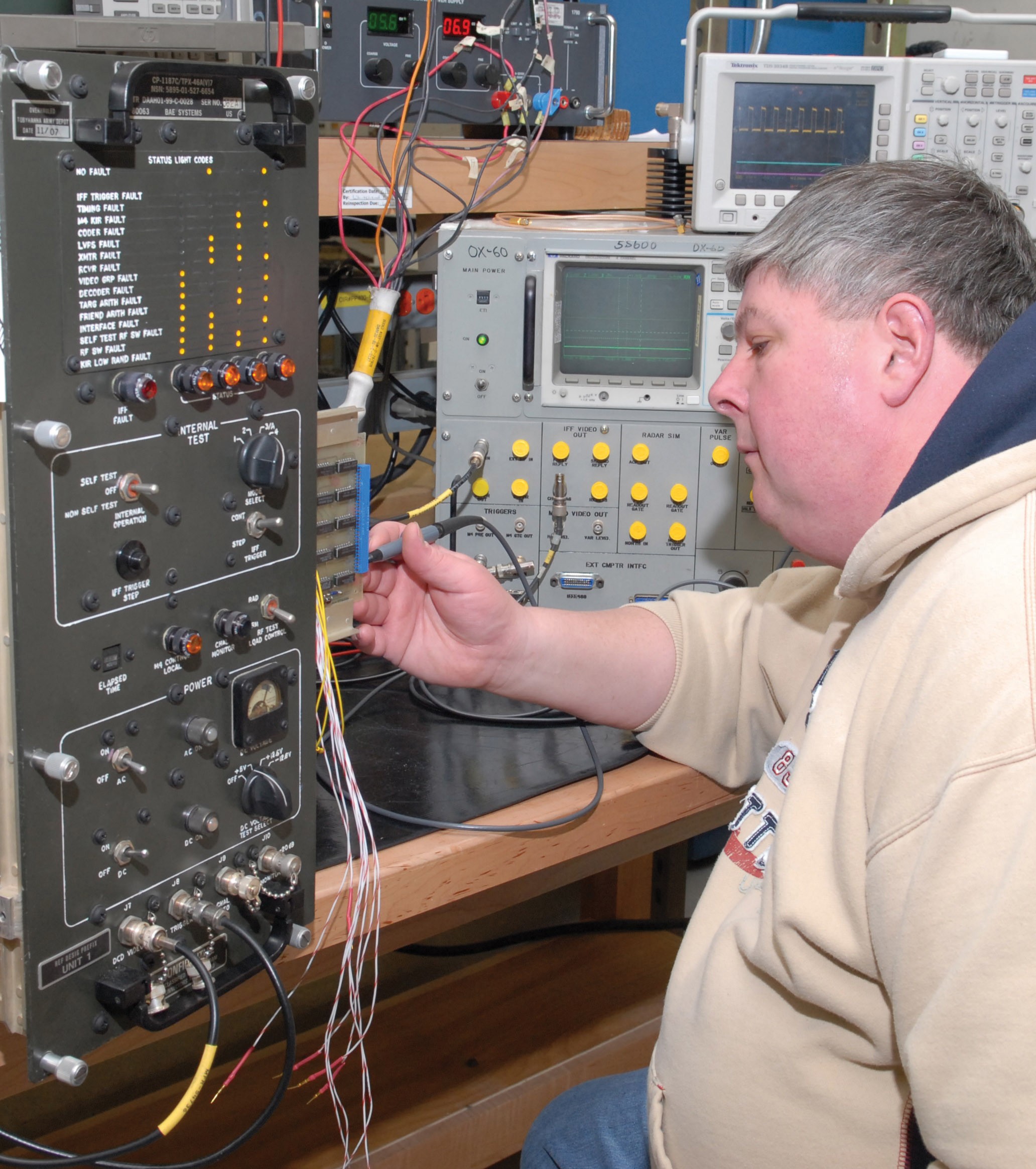TOBYHANNA ARMY DEPOT, Pa. - Technicians overhauled as many Patriot Missile System Interrogators in four months as they normally do in a year to meet warfighter needs.
Technicians in the Air Defense Interrogator Branch have completed six AN/TPX-46A (V)7 Interrogator Set overhauls 30 days ahead of the February deadline. The branch is part of the Intelligence, Surveillance and Reconnaissance Directorate's Surveillance Systems Division.
"The Patriot system is refurbished at Letterkenny Army Depot and they send us the TPX-46 for repair and overhaul," said Branch Chief John Glatz.
"Letterkenny asked us in early October if we could complete six by the end of February, which is very unusual."
The Patriot Missile System is designed to shoot down enemy aircraft as well as in coming missiles. The Interrogator, which is part of the system, identifies friendly and foe (IFF) aircraft. Missiles are identified and tracked with radar. Tobyhanna has been repairing and testing the Interrogator for more than 20 years.
"We overhaul the AN/TPX-46 Interrogator Set, which means they are completely disassembled, sent to our support shops, reassembled and performance tested in accordance with Army standards. The Interrogator is like new by the time they are done going through our processes." said Franklin Frey, Surveillance Division chief.
Branch technicians conduct a 100 percent replacement of all parts that have been historically identified as high failure rate components. In addition, the branch technicians troubleshoot, repair, test and replace components of the system as needed. Glatz noted that there are not many unusual problems. "Transmitters can be difficult to troubleshoot and repair, but the technicians handled this mission with no problems."
The Systems Integration and Support Directorate restores faceplates by stripping them, making all mechanical repairs, then sandblasting and baking on a chip resistant paint.
"They restore identifying numbers and letters using a silk screening process," Glatz said. "Even door handles are disassembled and repaired, then painted using the same chip resistant paint process."
"Systems integration does an outstanding job; they make the systems look like new and the Interrogator branch makes them function like new," Frey said. "This mission is a testament not only to systems integration and the Interrogator branch, but the entire depot."
After all repairs and testing are carried out the systems are shipped to Letterkenny.
Tobyhanna technicians travel to Letterkenny where they install and validate the Interrogator in a Patriot Missile System hot mock-up and to Army standards.
Tobyhanna recently received funding to overhaul an additional three AN/TPX-46 Interrogators in fiscal year 2009.
Tobyhanna Army Depot is the largest full-service Command, Control, Communications, Computers, Intelligence, Surveillance, and Reconnaissance maintenance and logistics support facility in the Department of Defense. Employees repair, overhaul and fabricate electronics systems and components, from tactical field radios to the ground terminals for the defense satellite communications network.
Tobyhanna's missions support all branches of the Armed Forces. The depot is the Army Center of Industrial and Technical Excellence for Communications-Electronics, Avionics, and Missile Guidance and Control Systems and the Air Force Technology Repair Center for ground communications and electronics.
About 5,700 personnel are employed at Tobyhanna, which is located in the Pocono Mountains of northeastern Pennsylvania.
Tobyhanna Army Depot is part of the U.S. Army CECOM Life Cycle Management Command. Headquartered at Fort Monmouth, N.J., the command's mission is to research, develop, acquire, field and sustain communications, command, control, computer, intelligence, electronic warfare and sensors capabilities for the Armed Forces.




Social Sharing